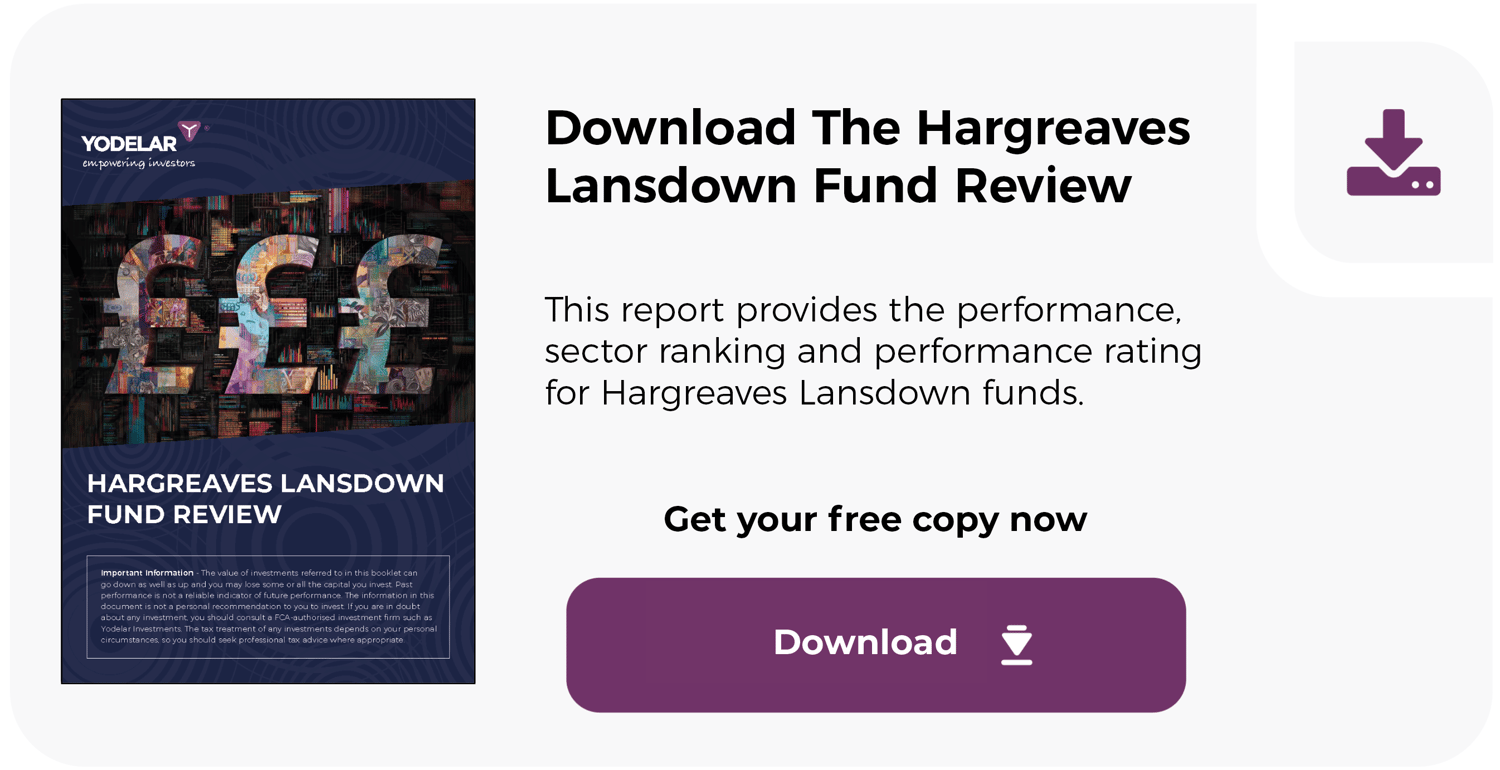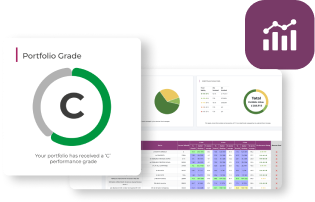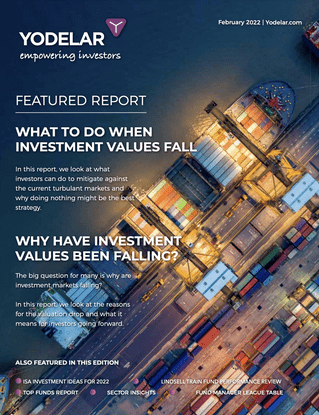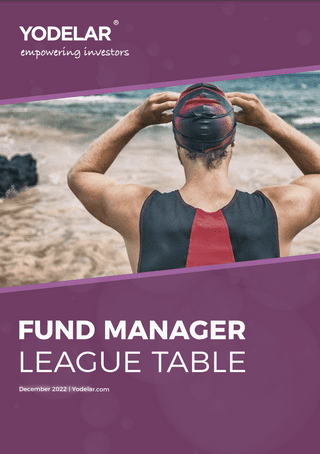- Of the 21 Hargreaves Lansdown funds analysed in this report, 15 received low ratings of just 1 or 2 stars, reflecting consistently weak performance across multiple timeframes.
- Only one HL fund achieved a top 4-star Yodelar performance rating based on consistent returns over 3-month, 6-month, 1-year, 3-year, and 5-year periods.
- The HL Growth A Acc GBP fund is the largest in Hargreaves Lansdown’s range, managing nearly £2 billion in assets. It has also ranked among the top-performing HL funds over the past 1 & 3 years.
- In contrast, the HL US fund, despite being among the platform’s largest offerings, produced poor returns relative to its sector peers across the analysed periods.
Hargreaves Lansdown is the UK’s largest direct-to-investor platform, administering more than £155 billion for over one million clients. Once a pure fund supermarket, the business has increasingly moved into fund management, now running 21 proprietary funds worth almost £14 billion.
This expansion has been rapid, with the in-house range growing by more than a third in the past 18 months. Yet our latest analysis finds that scale has not translated into consistent performance. Of the 21 funds reviewed, 15 ranked in the lower half of their sectors over 6-month, 1-year, 3-year, and 5-year periods. Only one fund achieved a top 4-star Yodelar rating for consistent outperformance.
These results highlight a clear pattern: while some HL funds have delivered strong returns in certain periods, the majority have underperformed their sector peers, often with higher-than-average fees. This review examines the five largest HL funds in detail and provides a full performance breakdown of their entire range.
Hargreaves Lansdown Fund Performance Summary
Hargreaves Lansdown offers a wide range of funds across multiple investment sectors. To assess their effectiveness, it is crucial to compare each fund’s performance against that of its sector peers.
In this report, we reviewed 21 Hargreaves Lansdown funds, evaluating their performance over 6-month, 1-year, 3-year, and 5-year periods. Each fund was assessed and given an overall rating based on how it compared with other funds in its respective sector.

Our analysis highlights a consistent trend of underperformance. 71.4% of HL’s funds delivered returns below their sector averages, and only one fund achieved a top 4-star rating.
This represents a marked contrast to HL’s established reputation and raises concerns about the overall competitiveness of its fund range.
5 Largest Hargreaves Lansdown’s Funds
Out of the 21 HL funds analysed, the table below highlights 5 of Hargreaves Lansdown’s largest funds. These flagship funds represent a significant share of client investments.

Each fund has been assigned an overall rating based on its performance relative to sector peers over the past 6 months, as well as over 1, 3, and 5-year periods. Despite their prominence, some of these funds have struggled to deliver consistent outperformance.

The table shows the annual performance of each fund for each of the past five full calendar years where data is available.
1. HL Growth A Acc GBP
Launched in December 2022, the HL Growth A Acc GBP fund is a multi-asset strategy designed to grow your investment over any 10 years. It also aims to maintain a level of risk equivalent to 80–90% of global stock market volatility, as measured by the MSCI All Countries World Index (GBP Total Return, Net). The fund primarily invests in US, UK, and global equities, with smaller allocations to bonds and alternative assets.
Classified within the IA Mixed Investment 40–85% Shares sector, it is one of Hargreaves Lansdown’s largest funds, managing nearly £2 billion in assets. Despite its scale, performance so far has been mixed.
Over the past three years, the fund achieved a strong return of 31.93%, outperforming the sector average of 22.86% and ranking 18th out of 209 funds. Its one-year performance has also been notable, delivering a return of 11.36%, comfortably ahead of the sector average of 9.18%.
These returns were largely driven by gains in global equities, particularly in the US, during a period of improving investor sentiment. The fund benefited from strong corporate earnings, easing inflation, and stable interest rates throughout 2023 and 2024, which supported its exposure to large-cap UK and international stocks.
However, over the last six months, the fund’s return slipped to 1.61%, falling below the sector average of 2.11%. A decline in US equity valuations—especially in the tech sector—was the main driver of this underperformance. Investor concerns over new trade tensions and regulatory risks, including headlines surrounding Chinese tech firm DeepSeek, rattled sentiment. While bonds cushioned losses, the fund’s equity-heavy stance left it exposed to short-term volatility.
Despite this setback, its longer-term performance has ranked it among the top-performing funds in the Hargreaves Lansdown range. With an ongoing charge of just 0.10%, it continues to offer investors cost-effective access to diversified global growth.
2. HL Multi Manager Balanced Managed A
The HL Multi Manager Balanced Managed A fund invests in a mix of global shares and bonds, aiming to deliver growth over the long term. It typically holds 40% to 85% in shares and 15% to 60% in bonds. The fund manages around £1.09 billion in assets.
Over five years, it returned 39.57%, compared with 36.81% for the sector average. Its three-year return was 27.14% versus 22.86% for the sector, and over one year it returned 9.58% against 9.18%.
Stronger results in these periods coincided with rising US and global stock markets in 2023–2024, alongside steadier returns from its bond holdings. Asset allocation decisions also appear to have supported performance.
In the last six months, the fund returned 1.67%, slightly behind the sector average of 2.11%. This period saw market volatility linked to inflation, interest rate changes, and weaker economic sentiment in the US and Europe. Technology and cyclical sectors, which make up a notable share of the portfolio, saw short-term declines, while bond prices fell as rates rose.
The fund uses a multi-manager approach, spreading investments across a range of funds to diversify and manage risk. This structure can mean higher fees and slower adjustments in fast-changing markets.
3. HL Multi‑Manager Special Situations A
The HL Multi‑Manager Special Situations fund seeks long-term capital growth over five years. It allocates at least 80% to a diverse mix of shares from global companies, including those in the UK, developed markets, and emerging economies.
It follows a multi-manager approach, selecting a range of actively managed funds that focus on undervalued or high-potential companies undergoing significant change. This strategy blends specialist stock selection with built-in diversification to manage risk while targeting solid long-term returns.
Classified within the IA Global sector, the fund oversees approximately £1.75 billion in assets, making it one of Hargreaves Lansdown’s largest funds.
Over five years, the fund returned 50.14%, lagging the sector average of 59.07%. In contrast, more recent performance has been encouraging. Over past three years, the fund returned 34.03%, outperforming the sector average of 32.32% and placing it in the upper half of its sector. Over the past year, it delivered 10.85%, slightly ahead of the sector average of 10.73%. Notably, it was the only HL fund listed in the table to outperform the sector over the past six months, returning 0.49% compared to the sector average of -0.40%.
4. HL UK Income A Acc
The HL UK Income A Acc fund invests at least 80% of its assets in UK equities with the objective of delivering income and capital growth over the longer term. Its stated aim is to outperform the FTSE® All-Share Total Return Index, after fees, in both income and total return over any five-year period. The portfolio focuses on companies with established business models and consistent dividend records, and it also makes selective use of collective investment schemes and ETFs.
With assets of approximately £1.72 billion, it is one of Hargreaves Lansdown’s largest single-country equity funds. It has the highest ongoing charge figure (OCF) of the five HL funds reviewed, at 1.22%.
Over the past five years, the fund delivered a total return of 68.15%, compared with 71.07% for the IA UK Equity Income sector average. This relative underperformance coincided with periods when growth stocks, particularly in the technology sector, outperformed value and income strategies. The fund’s comparatively low exposure to technology stocks may have limited returns during these phases.
Over the more recent three-year period, the fund returned 32.83%, ahead of the sector average of 26.99%. For the one-year period, it returned 15.94%, compared with 11.93% for the sector, placing it 19th of 66 funds. This coincided with higher allocations to financials, consumer cyclical, industrial, and energy stocks, which performed strongly during periods of higher interest rates and improving economic activity. Notable contributors over this time included RELX PLC, 3i Group, and Lloyds Banking Group.
Over the latest six months, the fund returned 8.21%, ranking 43rd of 67 funds and slightly below the sector average of 9.09%. This period saw weaker performance from cyclical sectors, combined with muted UK economic sentiment, lower energy prices, and renewed investor interest in growth-oriented stocks.
The fund’s relative performance within its sector has varied over time, reflecting changes in market conditions, sector allocations, and investment style factors.
5. HL US A Acc GBP
Launched in November 2022, the HL US A Acc GBP fund aims to outperform the MSCI USA Index (net of 15% withholding tax) over rolling five-year periods, after fees. It invests a minimum of 80% in shares of US companies, either directly or via other investment funds and ETFs.
With £1.43 billion under management, the portfolio is relatively concentrated and adopts a growth-focused approach.
Despite its strategy, the fund - like many others from Hargreaves Lansdown - has struggled within the IA North America sector. Over the past 12 months, it returned 9.65%, trailing the sector average of 11.36%. Its six-month return was -4.59%, slightly below the sector’s -4.36%.
This underperformance has been influenced by ongoing US trade tensions, fiscal uncertainty, currency movements, and market volatility. Its relatively high ongoing charges have further dampened net returns, making it less competitive against lower-cost or passive alternatives.
Given its relatively recent launch, the fund does not yet have a long-term track record. Its stated investment horizon is five years, but current performance reflects the shorter time frame for which data is available.
Performance and Fees: Comparing HL Funds to Sector Peers
Hargreaves Lansdown offers a wide range of in-house funds across different sectors. Our analysis shows that several of its largest and most widely held funds have delivered returns below the sector average over multiple timeframes, while also carrying ongoing charges that are above the sector median.

To provide a clear picture of overall performance and how these funds compare with their peers, we have listed the Ongoing Charges Figure (OCF) and overall Yodelar ratings for each of the 21 Hargreaves Lansdown funds analysed in this report.

*Source: hub.yodelar.com
From this analysis, 15 of the 21 funds delivered returns below their sector averages across all measured periods. For example, the HL Moderately Adventurous Managed fund has an OCF of 0.88% and returned 1.45% over the past six months, compared with a sector average return of 2.37% and an average OCF of 0.65%. This placed it among the higher-cost and lower-performing funds in its category during that period.
Summary
Our findings show that while Hargreaves Lansdown remains a dominant platform provider, its in-house funds have struggled to match the performance of many whole-of-market alternatives. The fact that over 70% of its range underperformed sector averages across multiple timeframes raises questions about their long-term competitiveness - particularly when higher fees are taken into account.
For investors, this reinforces the need to evaluate each fund on merit rather than brand recognition. A well-structured portfolio should be diversified across regions, sectors, and asset classes, with fund selection driven by robust performance data and a clear risk strategy.
No single provider will lead in every market environment, which is why regular portfolio reviews and timely adjustments remain critical to achieving consistent results.
Understanding where your portfolio is strong - and where it could be improved - is the first step towards building a structure that can adapt to changing conditions and deliver over the long term.
Building a Portfolio That’s Resilient for the Future
This analysis shows that a number of Hargreaves Lansdown funds have underperformed their sector averages over the periods measured. However, no fund manager will outperform in all market conditions, and even well-regarded firms can experience phases where returns fall behind peers. Past performance can offer useful context for comparison, but it is not a reliable indicator of future results.
What matters more is how well a portfolio is structured for the years ahead. Diversification, appropriate asset allocation, and a clear long-term financial plan are fundamental to building a resilient investment strategy. No single fund or provider will lead in every environment, which is why maintaining balance across regions, sectors, and asset classes remains essential.
Following Yodelar’s merger with MKC Wealth, our clients can benefit from portfolios that are managed on a discretionary basis by MKC Invest, a discretionary fund management firm within the MKC group. This enables timely portfolio adjustments without the delays of client-by-client approval, helping to ensure investments remain aligned with objectives as markets evolve. Efficiently managing portfolios through constantly changing market conditions requires ongoing analysis and insight - a level of continuous monitoring and oversight that our investment process is designed to deliver.
If you’re unsure whether your portfolio is positioned to meet your long-term goals, a professional review can provide the clarity you need. Book your free review today and take a confident step towards a more structured, future-focused investment approach.



















